Six Sigma Methodology for Process Improvement in Construction
VerifiedAdded on 2023/06/08
|6
|923
|487
Report
AI Summary
This report examines the application of the Six Sigma methodology as a process improvement strategy within the construction industry. It provides an overview of Six Sigma, detailing its two main sub-divisions: DMAIC (Defining, Measuring, Analysing, Improving, Controlling) and DMADV (Defining, Measuring, Analysing, Designing, Verifying). The report highlights the methodology's context, current applications, practices, and implementation in various industries and construction companies. It discusses the opportunities and benefits of Six Sigma, such as improved communication, reduced delays, and enhanced productivity, while also addressing the barriers to its implementation, including the deficiency of skilled professionals and financial constraints. Furthermore, the report suggests avenues for further work, emphasizing the need for reviews, tracking, and cultural changes. In conclusion, it recommends that academic practitioners quantitatively compare the benefits of Six Sigma with other process improvement methods, advocating for its structured and flexible procedure for collecting information and removing invaluable activities.
1 out of 6
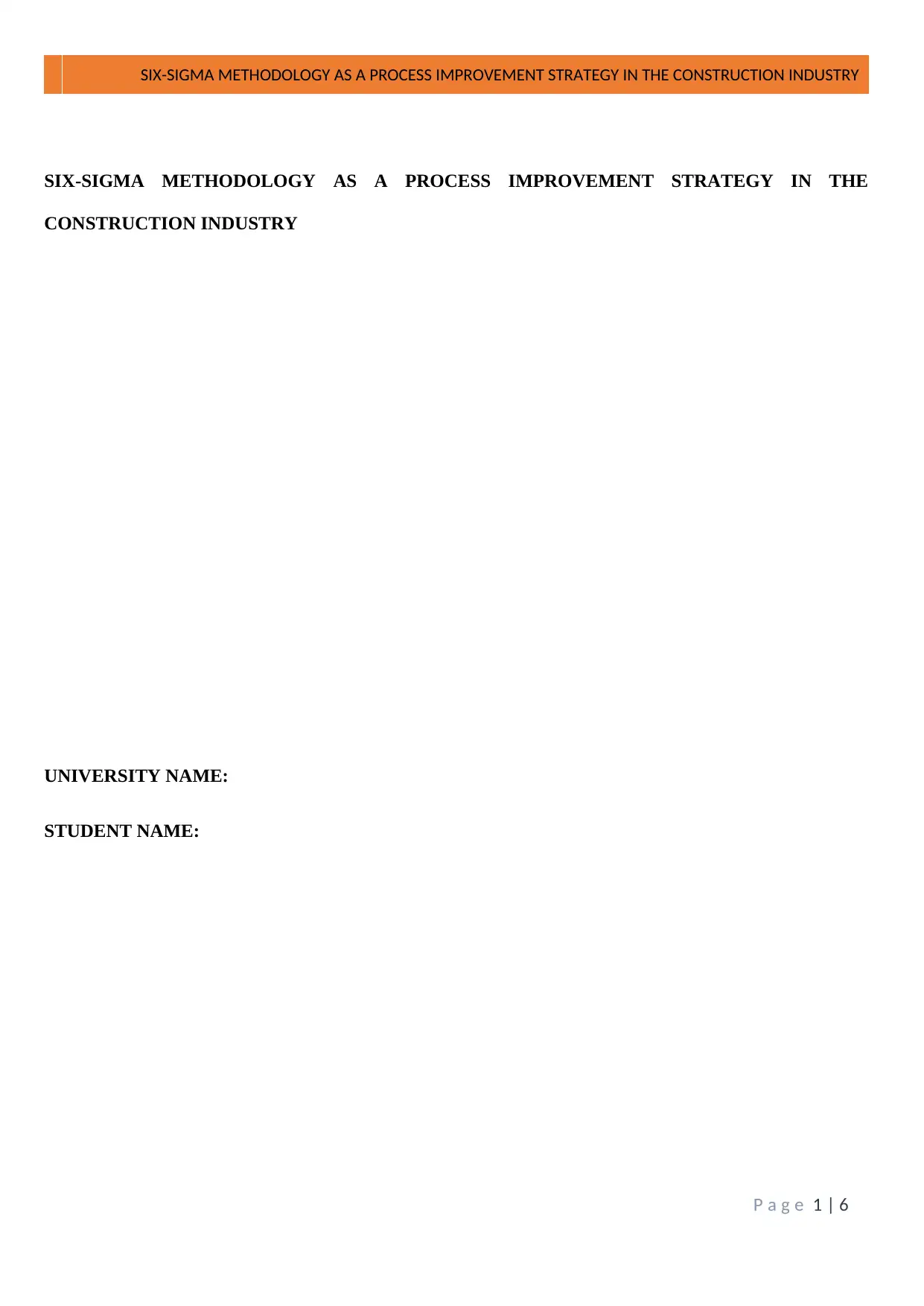
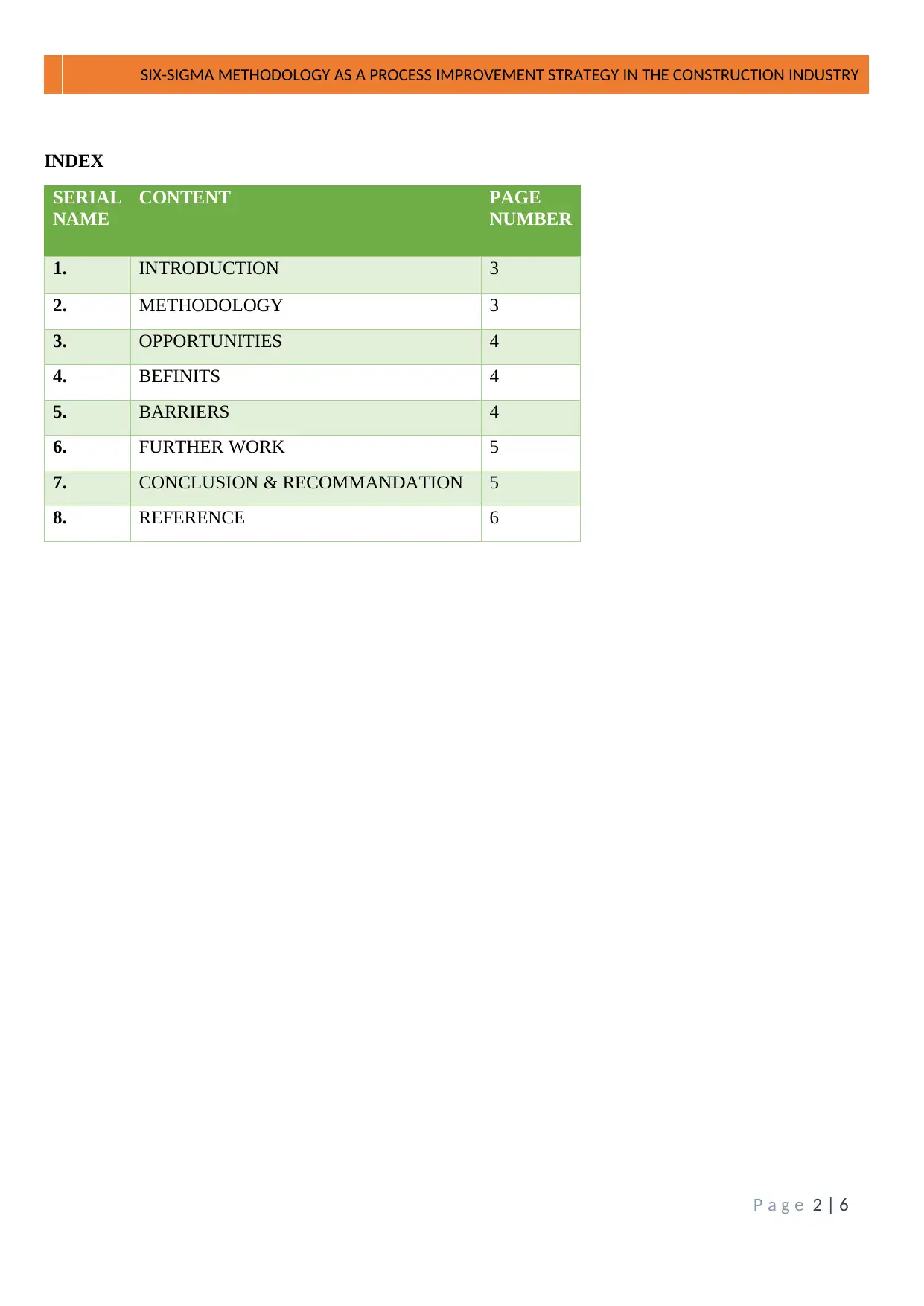
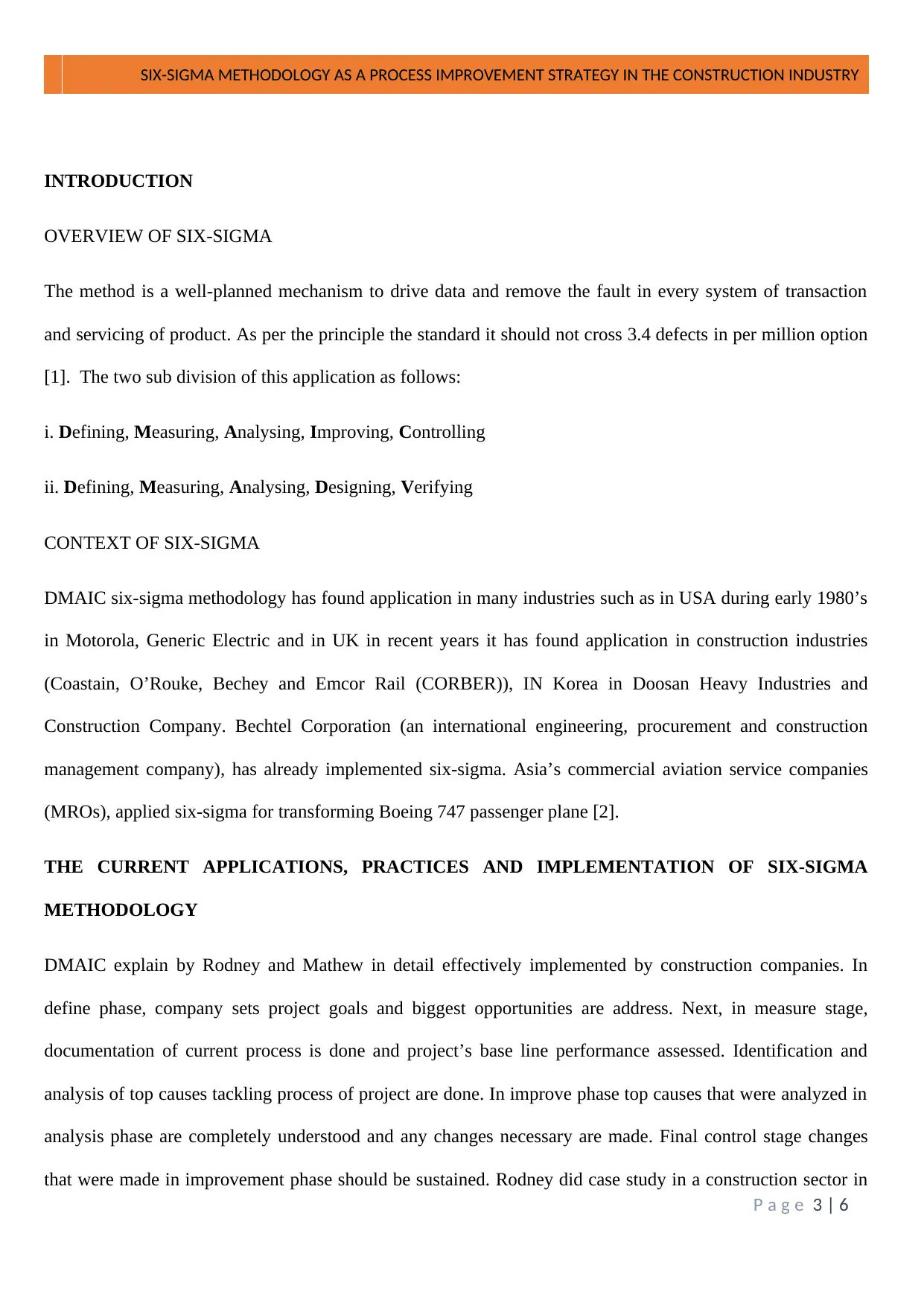

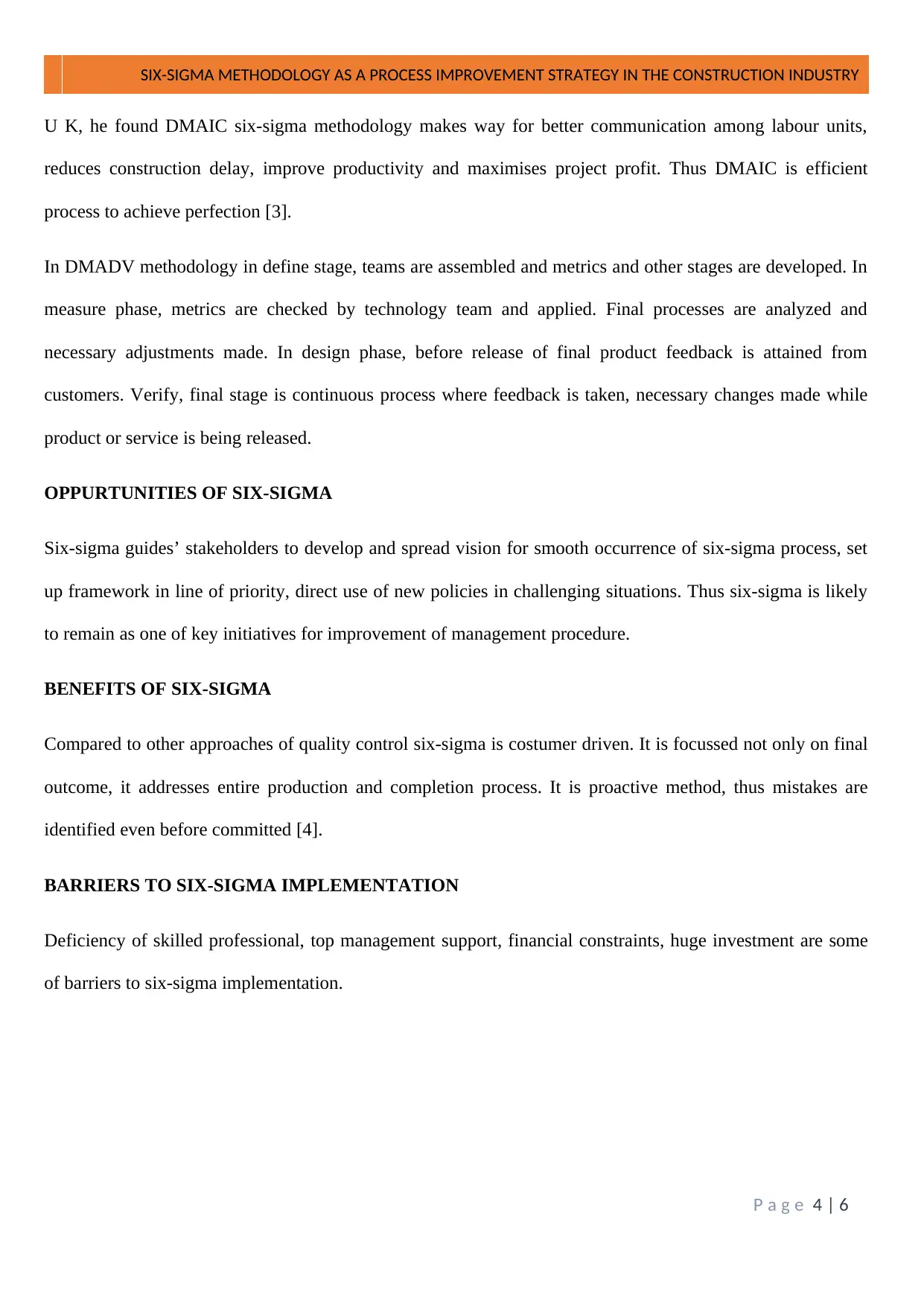
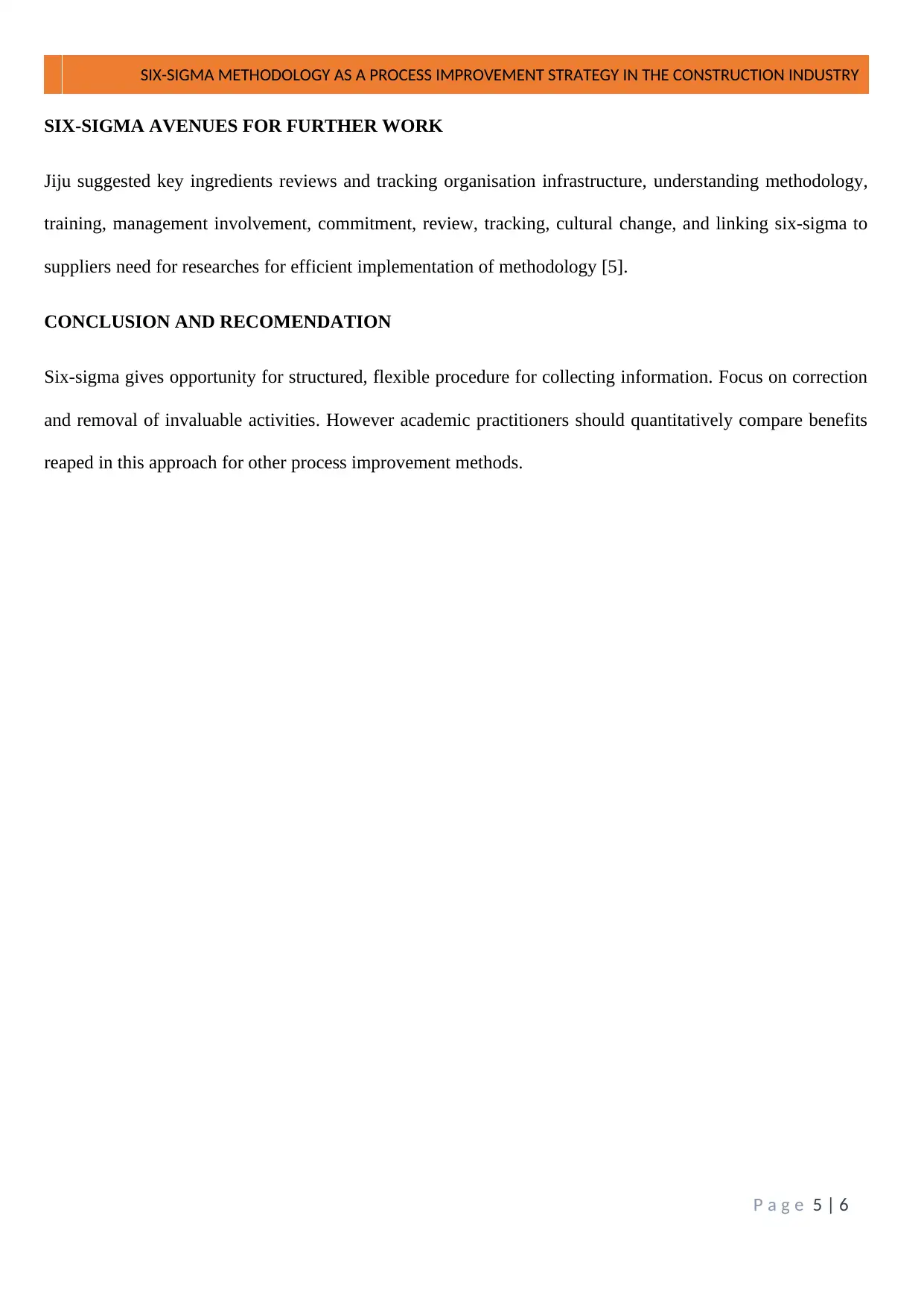
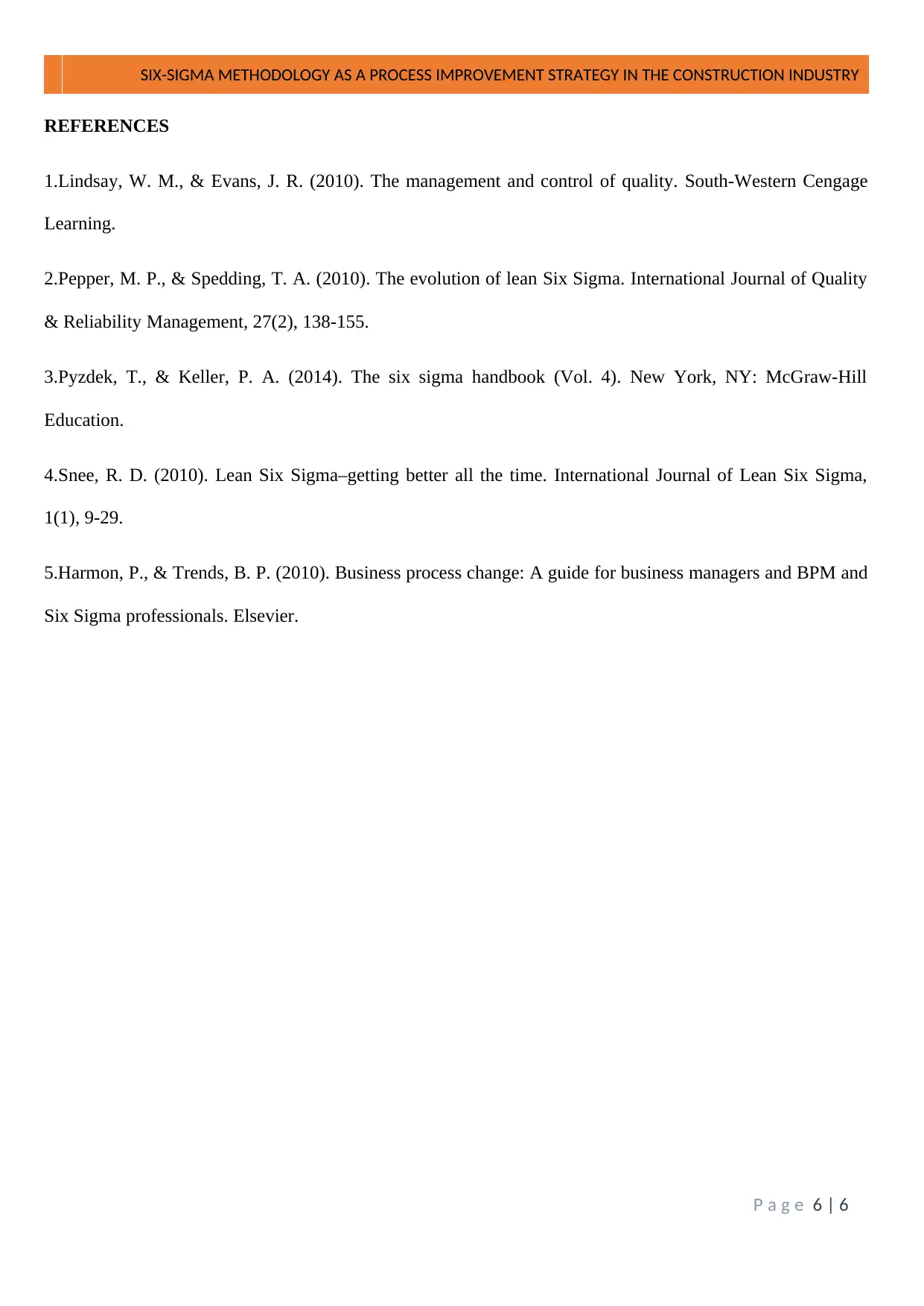






![[object Object]](/_next/static/media/star-bottom.7253800d.svg)